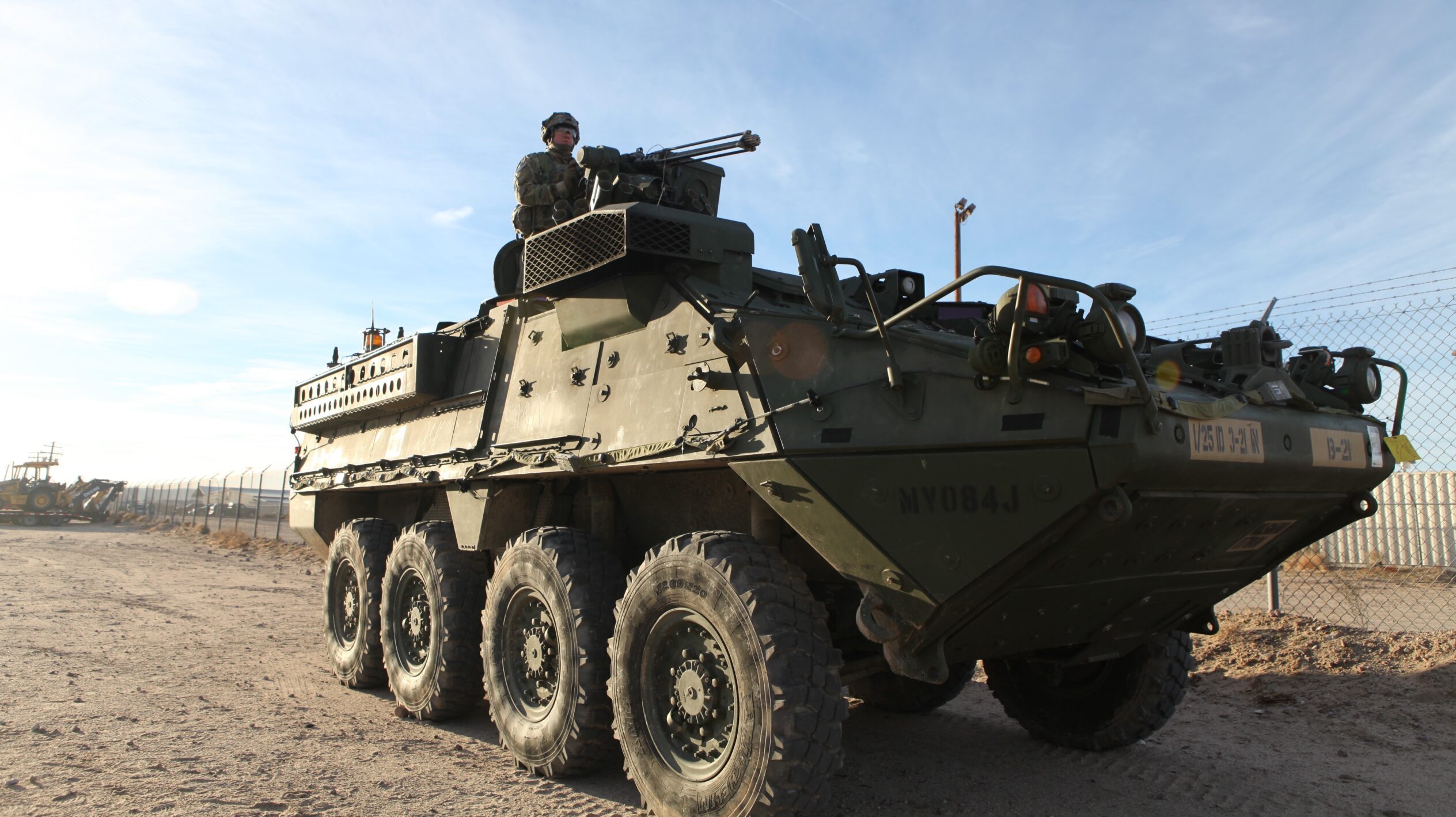
The Army’s Stryker armored vehicles are one of the military programs HELworks’ High Energy Laser Mission Equipment Package is set to be employed. (U.S. Army Sgt. Michael Spandau/Released)
AUSA 2022 — Booz Allen Hamilton today announced it is standing up its first business unit focused exclusively on directed energy and high energy lasers, dubbed HELworks.
The impetus for the new organization, which boasts approximately 50 staff and two locations in Virginia and Tennessee, was to consolidate a number of different directed energy projects being worked throughout the company, according to Joe Shepherd, HELworks president and chief executive officer.
“Now that we’ve been able to progress as we have with that tech maturation, and we have real solutions, and a product portfolio that addresses the warfighter’s needs, this time was perfect for us to be able to position this segment of the business to deliver those capabilities separately through HELworks,” he told Breaking Defense in an Oct. 6 interview ahead of the announcement.
HELworks will start out with three directed energy projects under its purview, all at different stages of development, according to Shepherd.
The Modular Compact High Energy Laser, nicknamed MCHEL, is a static 12 kw weapon designed for ground engagements and already delivered to “the customer.” (Booz Allen Hamilton declined to disclose the identity of said customer.) The company claims it is the “smallest, lightest and most portable HEL weapon for its mission.”
RELATED: Iron Beam, Israel’s laser air defense system, could be ready in 2-3 years
The High Energy Laser Mission Equipment Package (HEL MEP) is a combination of kinetic and non-kinetic air defense capabilities designed to be outfitted on a US Army Stryker vehicle. Shepherd said Booz Allen is in the final stages of development and integration for that weapon system and it will be featured in a demonstration at Fort Sill in Oklahoma later this year.
The third initiative, dubbed LightEngine, is “essentially a powered and cooled laser that can be the common core infrastructure for a number of HEL systems,” according to Shepherd.
Booz Allen’s endeavor to stand up HELworks comes as the Pentagon continues to push directed energy weapons out of the research and development holes of the past decade and into operations. The Army, Navy and Air Force have all been advancing various high energy laser projects this year.
For the military, directed energy — if it can be mastered — offers both methods of destroying adversarial unmanned aerial systems or munitions at a cheaper cost than traditional kinetic weapons, as well as intelligence, surveillance and reconnaissance capabilities through the powerful optics required to use laser weapon systems.
Asked what has been the biggest stumbling block for industry to move the technology forward, Shepherd said it has come down to packaging the weapons in a way that the Pentagon can integrate them onto different platforms.
“Getting this capability on the right platforms for the operational mission has been a challenge,” he said. “These HEL systems and DE systems generally tend to be large and clunky because a lot of the systems that have been materialized and… [from a] prototyping perspective, operationalized, in the last number of years have been exactly that: operational prototypes.
“There hasn’t been a big focus on the packaging of those [lasers] onto relevant platforms or mission applicability. So that’s been the big challenge. And I think that’s where HELworks is really focused,” he continued.























